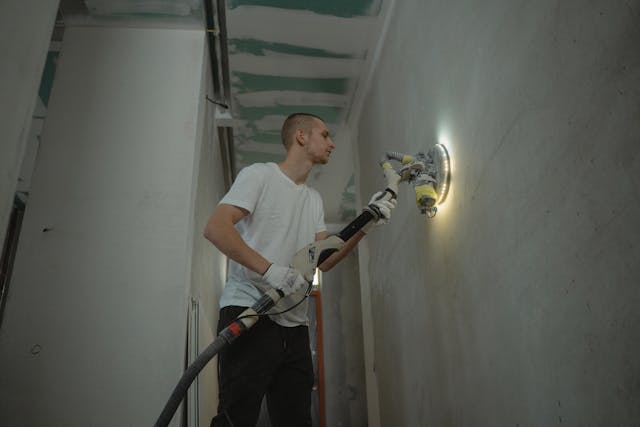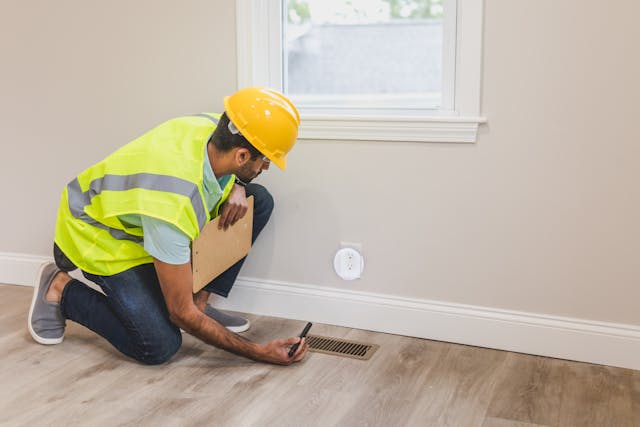Key Takeaways
Rental safety is a legal and ethical responsibility. Protecting tenants while shielding landlords from liability and costly repairs.
Regular inspections and maintenance of structural, electrical, HVAC, and fire safety systems are essential to staying compliant.
Partnering with a professional property management company like Fireside Property Management ensures your rental remains safe, habitable, and legally sound.
As a rental property owner, one of your top priorities should be ensuring that your property is safe, secure, and fully compliant with health and safety laws. Not only does this protect your tenants from harm, but it also shields you from potential legal issues and helps maintain the value of your investment.
At Fireside Property Management, we know that safety standards aren’t always obvious, and simply assuming your property is “safe enough” can lead to costly consequences.
CONTACT US TODAY FOR MORE INFORMATION
Contact
Why Rental Safety Standards Matter
Meeting safety standards is not just about avoiding fines or lawsuits, it’s about protecting people. Tenants rely on landlords to provide homes that are structurally sound, free from health hazards, and equipped with essential safety features.
When a rental fails to meet these basic requirements, it can lead to accidents, illness, and long-term damage to your reputation as a landlord.
On the legal side, rental safety standards are governed by local, state, and sometimes federal regulations. Landlords are required to meet specific habitability laws, and if you’re found in violation, the penalties can range from government fines to lawsuits filed by tenants.
Keeping your rental safe is not just ethical, it’s good business.
Signs Your Rental Meets Safety Standards
Safety compliance isn’t just about checking a few boxes. It requires a thorough, room-by-room evaluation of your property. Below are key areas to review to ensure your rental is up to code and safe for occupancy.
1. Structural Safety
The foundation of a safe rental property starts with its structure. This includes the walls, floors, ceilings, roof, doors, and windows. Long-term tenants always look for a safe and well-maintained property.

Walk through your property and check for sagging ceilings, water stains, cracked walls, loose railings, or uneven floors. These could be signs of deeper problems that may pose a risk to tenants.
If your building is older, it’s a good idea to have a licensed contractor or inspector perform a structural evaluation every few years to identify hidden issues.
2. Electrical System Compliance
Electrical issues are among the top causes of residential fires. Your property should have up-to-date wiring, a functioning breaker panel, and securely installed outlets and switches. Watch out for any signs of electrical issues.
Every room should have safe, grounded outlets and light fixtures that don’t flicker or overheat. Any exposed wires or outdated fuse boxes should be addressed immediately.
It’s also wise to check that outdoor lighting, especially around entryways, is working properly to reduce trip hazards and enhance security.
3. Working Smoke and Carbon Monoxide Detectors
This is one of the most basic and legally required features in any rental. Smoke detectors should be placed in every bedroom, outside sleeping areas, and on every floor of the home.
Carbon monoxide detectors should be installed in any property with gas appliances, fireplaces, or attached garages.
.jpg)
Test each detector monthly and replace batteries at least once a year. Many states require landlords to provide functioning alarms at move-in, while tenants are responsible for routine battery maintenance afterward.
4. Fire Safety Measures
Beyond smoke detectors, your rental should include at least one fire extinguisher in a visible and accessible location, preferably in the kitchen. Hallways and stairwells should remain clear and passable to serve as emergency escape routes.
If your property has multiple units, make sure each one has access to a safe, clearly marked exit route. In some cases, you may be required to post evacuation maps in common areas.
LEARN MORE ABOUT OUR PROPERTY MANAGEMENT SERVICES
Services
5. Plumbing and Water Safety
Leaks, water damage, and mold not only make a home uncomfortable, they can also pose serious health risks. When you budget for rental property maintenance, include emergency repairs for health reasons.
Check that all sinks, tubs, and toilets drain properly, and inspect under sinks for signs of water damage or mildew. Water heaters should be set to a safe temperature to avoid accidental burns.
If you notice recurring issues like slow drainage or water stains, bring in a licensed plumber to evaluate the system.
6. HVAC System Maintenance
Heating and cooling systems should be regularly serviced to prevent breakdowns and ensure tenant comfort.

Filters should be changed regularly, vents should be clean and free from dust buildup, and furnaces and air conditioners should be professionally inspected once a year.
A broken HVAC system can quickly lead to habitable condition violations, especially during extreme weather.
7. Mold Prevention
Mold is a common issue in damp or humid areas. Inspect basements, bathrooms, and areas around windows for musty smells or visible signs of mold.
Tenants who are exposed to mold may experience respiratory problems and other health issues, so it is important to address any moisture problems early.
Repair roof leaks, seal foundation cracks, and install ventilation fans in bathrooms and kitchens to reduce humidity.
8. Pest Control
Rodents, cockroaches, and other pests can quickly make a property unsafe. A pest-free environment is essential for tenant health and comfort.
If your rental has signs of infestation, take immediate steps to address the issue, both through preventative measures like sealing entry points and through regular treatments from a licensed pest control professional.
Additional Areas You Should Not Overlook
Some overlooked yet critical safety factors include:
Handrails and Staircases: All stairways should have sturdy handrails. Steps should be even and non-slip.
Window Locks and Screens: Especially for multi-story properties, windows should have working locks and, where appropriate, child-safe window guards.
Outdoor Spaces: Pathways, patios, and driveways should be free from tripping hazards. Good lighting outside the property also enhances security.
Emergency Contacts: Tenants should have clear instructions on how to contact emergency services, report maintenance issues, and what to do in the event of fire or gas leaks.
Conducting Routine Safety Inspections
Even if your property was up to code when you bought or renovated it, things can change quickly. Regular safety inspections help catch small problems before they become big, expensive ones.

Make it a habit to conduct at least one full property inspection annually, along with drive-by checks or unit visits every few months.
Create a checklist that includes all the items above and document your findings. This kind of recordkeeping also provides valuable legal protection in case of tenant disputes.
Why You Should Work With a Professional Property Management Company
Managing safety standards on your own can be overwhelming, especially if you own multiple properties or live out of town. That’s where a professional property management company can make a big difference.
A good property manager is trained to recognize code violations and safety issues quickly. They have the tools, contractor contacts, and experience to schedule repairs and handle emergency situations without delay.
They also stay up to date with changing laws and local regulations to ensure your rental remains compliant. A good property manager even screens potential tenants!
Property managers conduct regular inspections, track maintenance schedules, and keep documentation that proves you are doing your part as a responsible landlord. More importantly, they can handle safety complaints or tenant concerns before they escalate into legal disputes.
Partnering with a property management company not only improves the safety of your property, it also gives you peace of mind.
FIND OUT MORE ABOUT OUR TRUSTED TEAM
About
Bottom Line
Keeping your rental property safe is not just about ticking boxes. It’s about creating a livable, secure, and trustworthy home for your tenants.
By addressing everything from fire alarms and electrical systems to plumbing, mold, and pest control, you can avoid legal issues and costly repairs down the line.
If you need help, work with Fireside Property Management to ensure your rental meets all the right safety standards.


.jpg)
